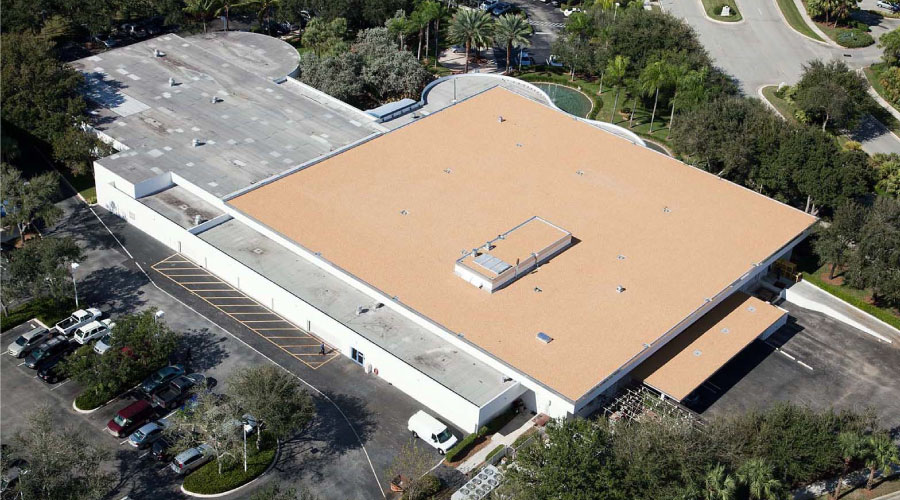Existing Conditions May Diminish Roof Coating's Effectiveness
Identify existing conditions that could diminish the effectiveness of a coating.
“While coatings can restore and extend the life of many roofs, they may not be the best choice for all existing roof conditions,” says Lynn Picone, director of inside sales with GAF. For example, Picone says water-based acrylic coatings are environmentally friendly and offer excellent reflectivity. But when installed on a roof on which low spots have not been eliminated and ponding water remains, the standing water and constant evaporative process can harm the coating. Technicians should build up low areas with crickets or tapered insulation to divert water to drainage points before applying the coating.
Similarly, if a nearby facility manufactures a chemical that exhausts onto a manager’s roof, the exposure might lead to premature deterioration of the coating or disrupt its successful application. In such circumstances, managers either can consider more frequent applications as part of the regular maintenance plan or choose another roofing technology that is less sensitive to facility conditions, Picone says.
Incompatibility
Select a coating that is compatible with the substrate. Once a manager has determined a roof is a viable candidate for coating, it is essential to assess the roof as a whole system when selecting a coating.
“Oftentimes, a building owner will be intrigued by the next bigger and better coating and can lose sight of the fundamentals,” says Julie Burkett, research chemist for the Garland Co., adding that the inter-coat adhesion between the coating and the substrate is one of the key determinations of a coating’s longevity.
A product on its own might appear to have superior physical and mechanical properties, but if the coating does not properly adhere to the substrate, it will delaminate or blister, leaving the roof vulnerable and weakened. In the case of restoring a silicone roof, using a polyurethane product could result in delamination.
“Even though the coating has the potential to be exceptional, due to the incompatibility between the two surfaces, the roof as a whole could fail,” she says. Selecting a high-quality coating that is compatible with the roof substrate will ensure the best performance and longevity.
Related Topics:














